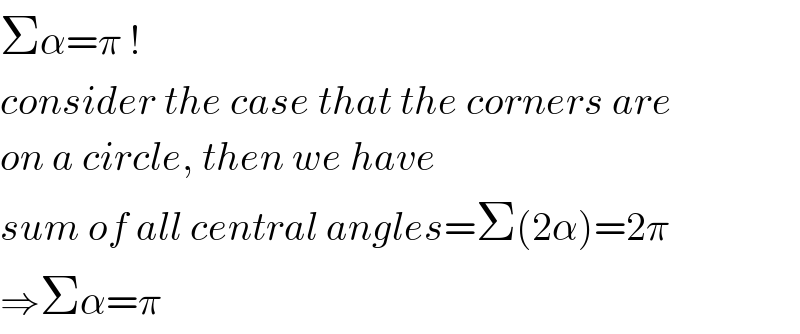
Question and Answers Forum
Question Number 51942 by mr W last updated on 01/Jan/19

Commented by mr W last updated on 01/Jan/19

Commented by tanmay.chaudhury50@gmail.com last updated on 01/Jan/19

Commented by mr W last updated on 01/Jan/19

Commented by tanmay.chaudhury50@gmail.com last updated on 01/Jan/19
![n sided star form n sided polygon. The sum of internal angles of n sided polygon x_1 +x_2 +x_3 +...+x_n =nπ−2π we have to find the value of α_1 +α_2 +α_3 +...α_n now consider any one triangle α_1 +a_1 +a_2 =π a_1 +x_1 =π a_1 =π−x_1 a_2 +x_2 =π a_2 =π−x_2 so α_1 +π−x_1 +π−x_2 =π α_1 =x_1 +x_2 −π α_2 =x_2 +x_3 −π ..... ..... α_1 +α_2 +α_3 +....+α_n =2(x_1 +x_2 +x_3 +..+x_n )−nπ so α_1 +α_2 +...+α_n =2[nπ−2π]−nπ =nπ−4π pls check i have derived the formula...](Q51958.png)
Commented by mr W last updated on 01/Jan/19

Answered by mr W last updated on 01/Jan/19

Commented by mr W last updated on 01/Jan/19

Commented by mr W last updated on 02/Jan/19

Commented by mr W last updated on 01/Jan/19

Commented by mr W last updated on 01/Jan/19

